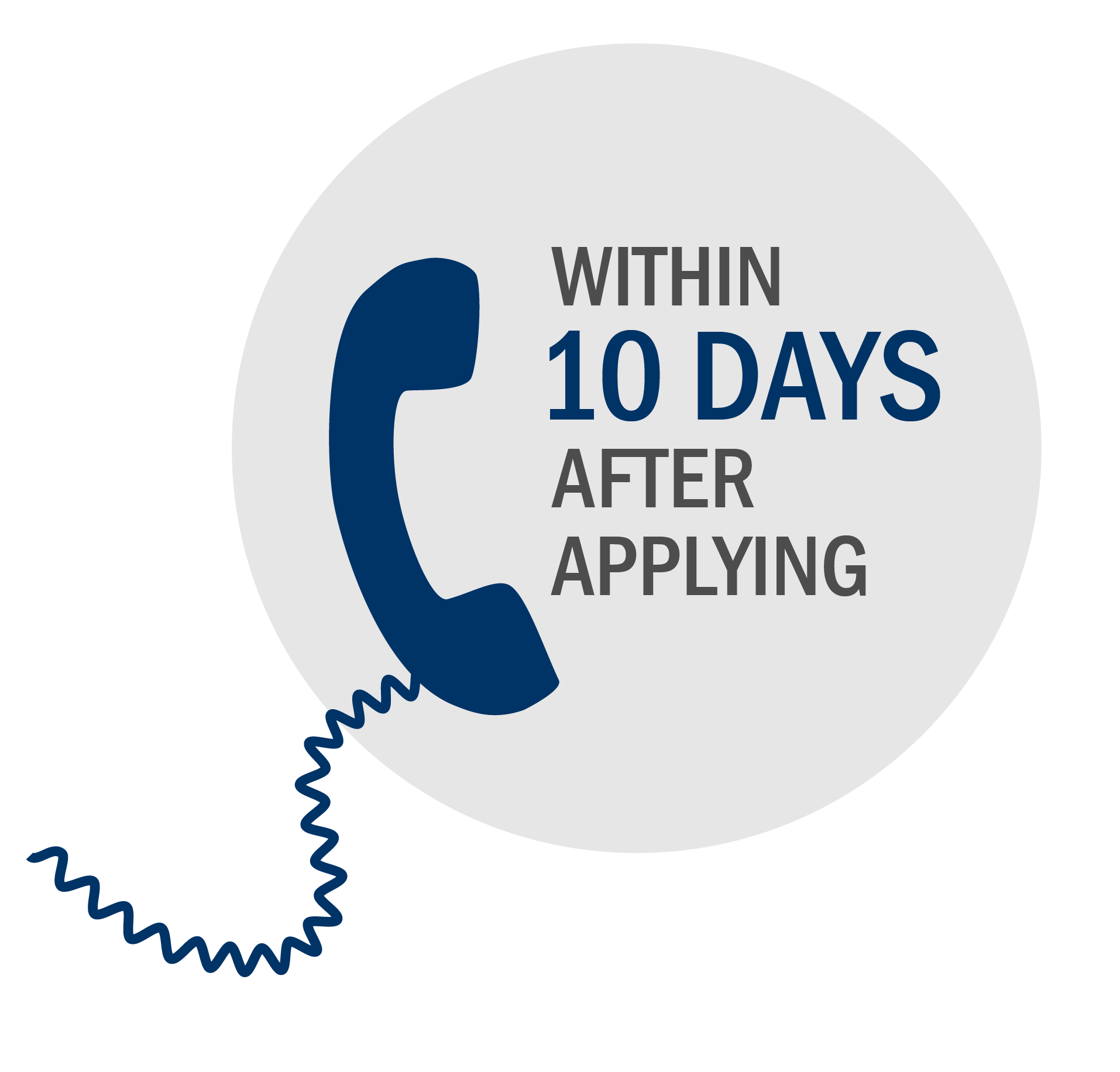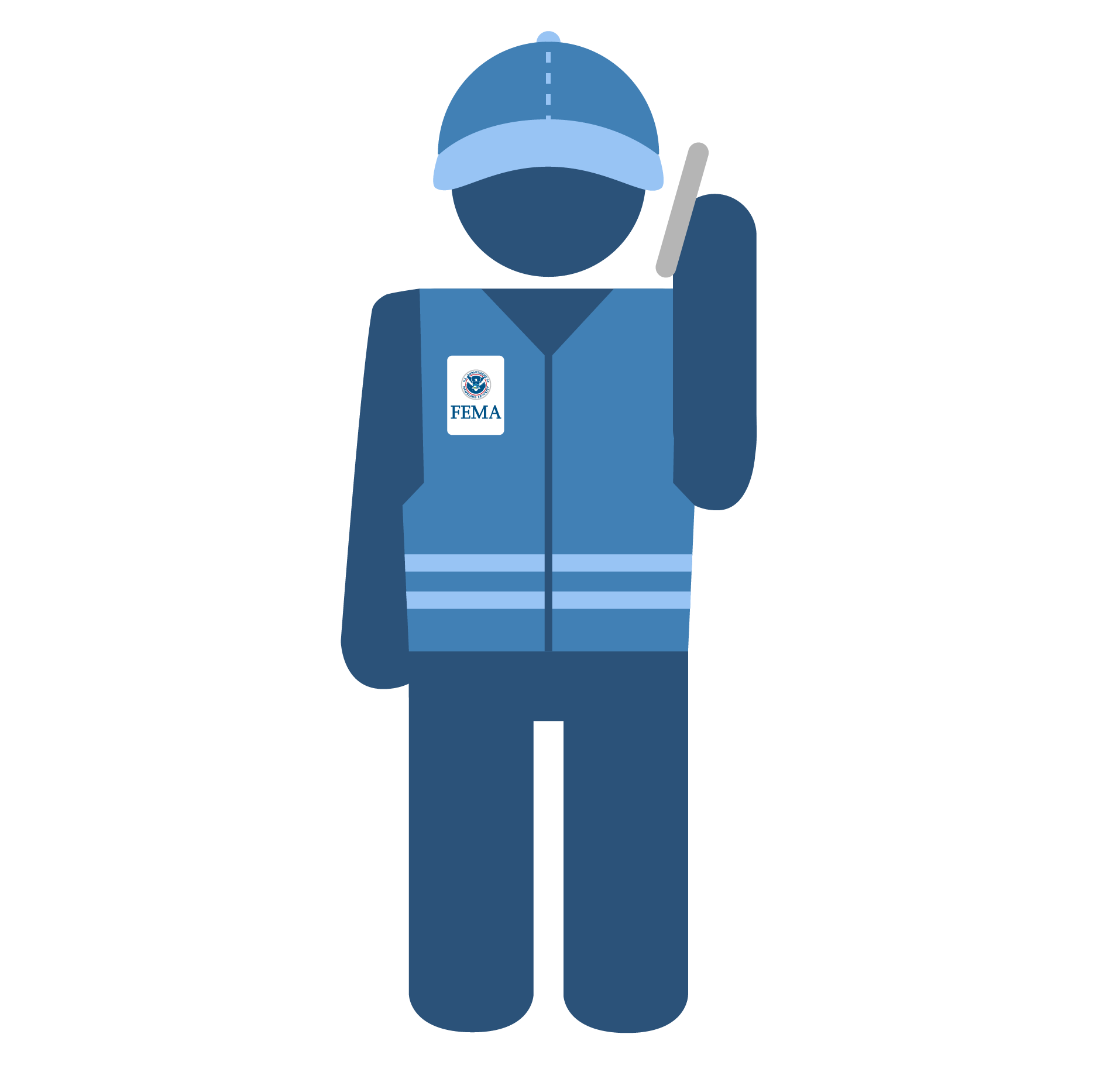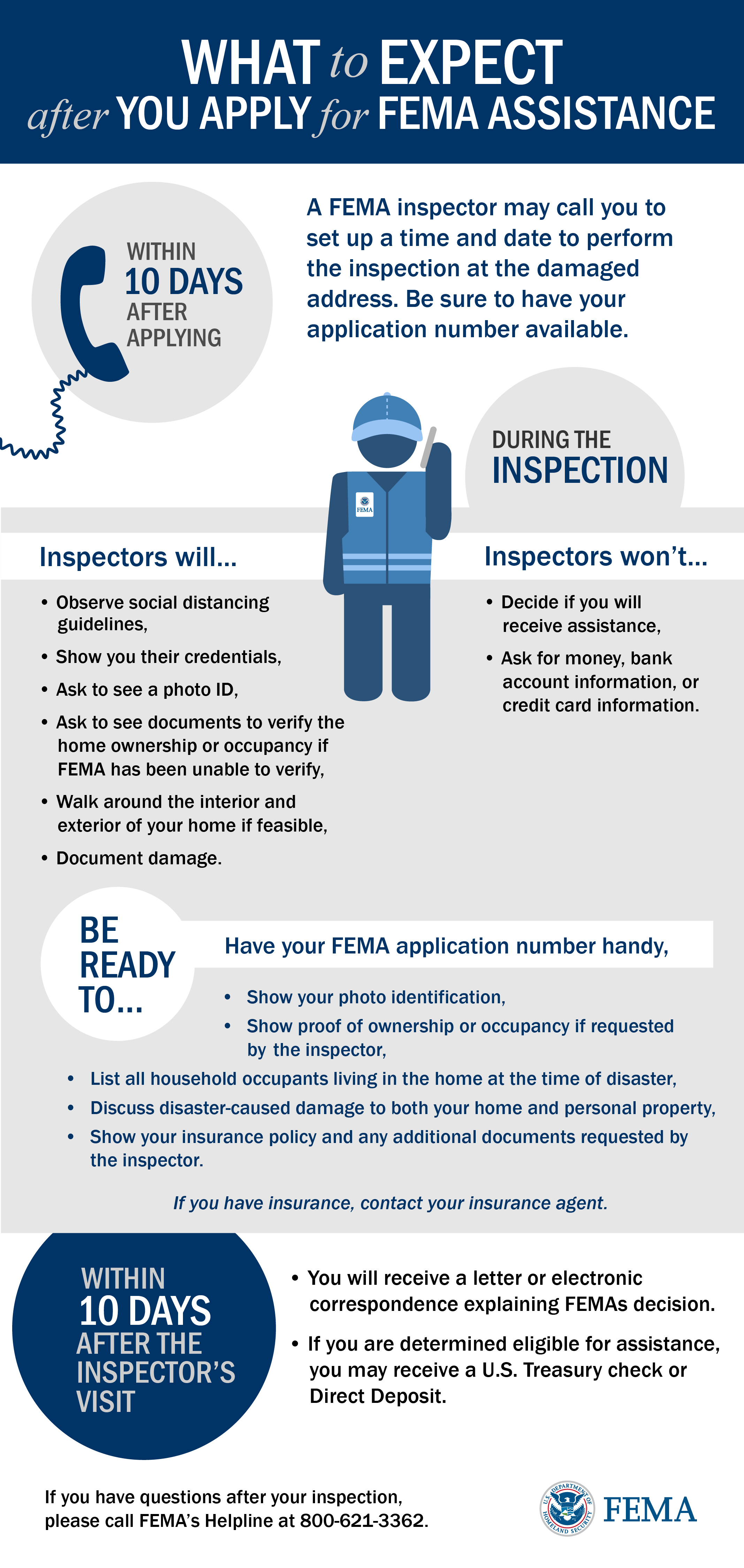Prepare
During
After
Additional Help
After you apply for disaster assistance, FEMA must verify your disaster-caused damage through an onsite or remote inspection as part of the process, as well as helping to determine federal assistance options available for applicants. Over the course of a few days FEMA staff and inspectors may call from an unknown or restricted phone number and make several attempts to discuss your disaster-caused damage.
An inspection can only be done when the applicant (you) or co-applicant is present. If the applicant or co-applicant is unable to meet with an inspector, a third-party can be designated in writing and pre-authorized before the scheduled time and date for the inspection.
If the home cannot be accessed, the inspector may meet with the applicant at the obstruction or a neutral location to verify occupancy and/or ownership.

Preparing for Your Inspection
Do not wait for the inspection to take place to do the following:
- File a claim with your insurance company, if you have insurance.
- Start cleaning up now, if it is safe to do so.
- Take photos of any damage.
- Make a list of your losses.
- Keep all receipts to verify expenses caused by the disaster.
Scheduling Your Inspection

Remember FEMA staff and inspectors may call from an unknown or restricted phone number and make several attempts over the course of a few days.
When the FEMA inspector calls, write down:
- The inspector’s name
- Date of call
- Date and time of appointment
- Inspector’s telephone number
If FEMA is unable to contact you to verify your damage, you will be sent a letter of notice and your application cannot be processed further—to proceed you must call FEMA’s Helpline (800-621-3362) to confirm your contact information and verify your need for assistance. Do not re-submit or create a new application at any point during the disaster assistance process. You can check the status of your application or read any FEMA letters by accessing your DisasterAssistance.gov account.
Information to Gather for Your Inspection
You should have the following information ready at the time of the inspection:
- Your photo identification
- Proof of ownership or occupancy, if requested by the inspector
- List of household occupants living in the home at the time of disaster
- All disaster-caused damage to property
- Your insurance policy and any additional documents requested by the inspector
During Your Inspection
Depending on the amount of damage, the inspection may take up to 45 minutes to complete.

FEMA inspectors are trained to recognize damage caused by a disaster, but they do not decide if you will receive assistance.
They observe and record damage that may be eligible within the Individuals and Households Program, which is different from assessments made by insurance adjusters or other disaster assistance programs, such as the U.S. Small Business Administration.
The inspector will:
- Attempt to verify the applicant’s name, address, contact information, occupancy and ownership status, and insurance coverage.
- Walk through the entire home to assess the condition of both damaged and non-damaged areas, noting disaster caused damage to real property (structural) and doing a complete inventory of all damaged and non-damaged essential personal property (appliances, furniture, etc.).
- Ask questions about disaster-caused losses and expenses including medical expenses, moving and storage expenses, items purchased in response to the disaster, uniforms, supplies, and tools required for school or employment.
- Take photos of the interior and exterior of the home during the inspection process.
The inspector will not:
- Ask for bank information. FEMA never charges a fee for an inspection.
- Climb on roofs or enter crawl spaces.
Disaster survivors’ health and safety remain FEMA’s priority so the agency will retain the ability to conduct inspections without entering the home. If you are apprehensive, due to ongoing COVID-19 uncertainties, or otherwise unable to enter the home, FEMA will follow Centers of Disease Control and Prevention guidance to conduct an exterior validation of the home including using social distancing and utilizing protective personal equipment.
If you suspect an inspector isn’t who they say they are, tell them to leave immediately and call local law enforcement.
Accommodations for Your Inspection
Reasonable accommodations, including translation and ASL interpreters, will be available to ensure effective communication with survivors with limited English proficiency, survivors with disabilities, and other individuals with access and functional needs.
You may invite an individual, such as a household member, relative or friend, to assist in communicating with the inspector.
After Your Inspection
Information collected during the inspection is only one of several criteria used by FEMA to determine a survivor’s eligibility for assistance. You will receive information explaining FEMA's eligibility decision within 10 days after the inspector's visit.
Determining Eligibility
If you are determined approved for assistance, you may receive a U.S. Treasury check or direct deposit based on what you selected during your application. You must use the money for its intended purpose as explained in the letter and keep records and receipts for at least three years, showing how the funds were used for disaster recovery. There are several categories of assistance, and it is possible to qualify for more than one.
If you are determined not approved for assistance for specific items, it does not necessarily mean items were omitted from the inspection. If you can demonstrate to FEMA that there was eligible disaster-caused damage exceeding the damage recorded in their inspection, you can appeal the decision within 60 days and/or request an opportunity to complete the application.
Additional Help
FEMA inspectors are unable to answer questions or access your information once they complete your inspection. If you have questions after your inspection, please call FEMA’s Helpline at 800-621-3362.


